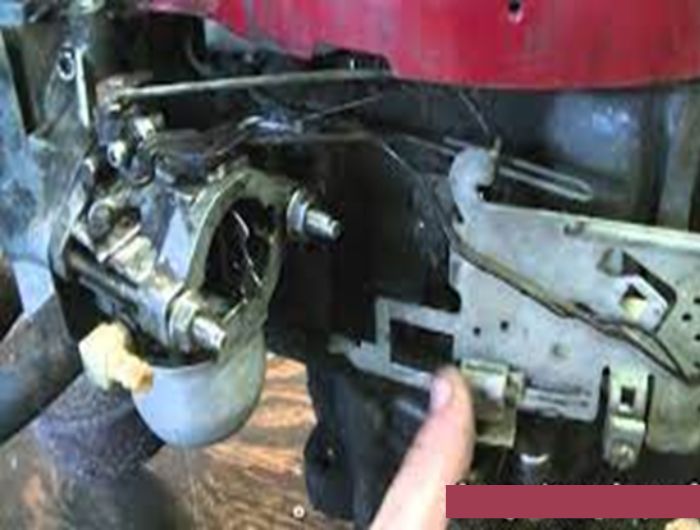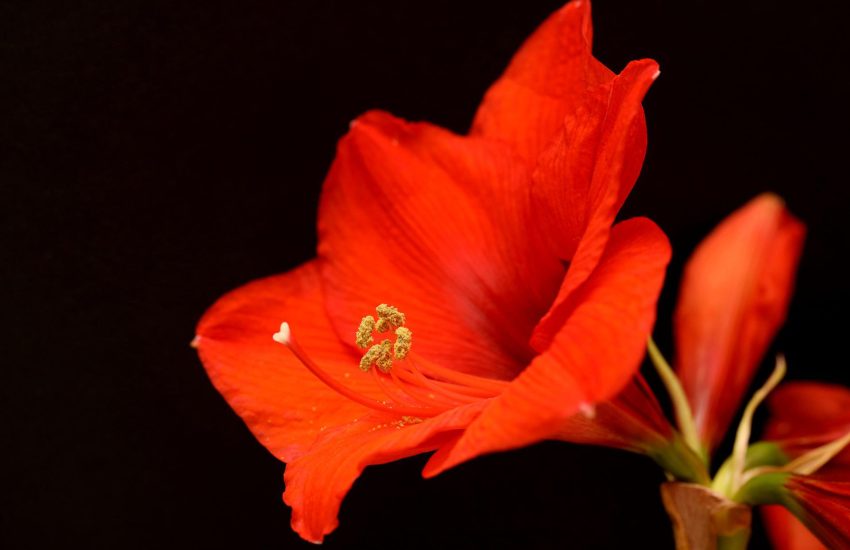How to Propagate a Rhododendron: Expert Tips and Techniques
Rhododendrons are beautiful flowering plants that can add a touch of elegance to any garden or landscape. Propagating rhododendrons is a great way to expand your garden without having to spend a lot of money on new plants. In this article, we will discuss how to propagate a rhododendron, so you can enjoy their stunning blooms year after year.

Before you start propagating your rhododendron, it is important to understand what it actually means. Propagation refers to the process of creating new plants from existing ones. There are several ways to propagate rhododendrons, including by seed, cuttings, and layering. Each method has its own advantages and disadvantages, and the best method for you will depend on your experience, resources, and preferences. In the following paragraphs, we will explore each method in more detail, so you can decide which one is right for you.
Understanding Rhododendrons
Species and Varieties
Rhododendrons are a diverse group of plants with over 1,000 species and thousands of varieties. The most common types of rhododendrons include deciduous and evergreen varieties, and they come in a range of sizes from tiny shrubs to large trees. Some of the most popular species of rhododendrons include Rhododendron ponticum, Rhododendron maximum, and Rhododendron luteum.
Ideal Growing Conditions
Rhododendrons thrive in environments that are cool and moist, with acidic soil and partial shade. They prefer well-drained soil that is rich in organic matter, and they require regular watering to keep the soil moist. Rhododendrons also need protection from harsh winds and direct sunlight, which can scorch their leaves and damage their delicate flowers.
To ensure optimal growth, it is important to plant rhododendrons in a location that provides the right balance of sunlight and shade. Generally, rhododendrons do well in areas with morning sun and afternoon shade. In terms of climate, rhododendrons are best suited to regions with mild temperatures and high humidity, such as the Pacific Northwest.
In summary, understanding the different species and varieties of rhododendrons, as well as their ideal growing conditions, is key to successfully propagating these beautiful plants. By providing the right environment and care, gardeners can enjoy the beauty of these stunning shrubs for years to come.
Propagation Basics
Propagation Methods
Rhododendrons can be propagated through several methods, including cuttings, layering, and grafting. Cuttings are the most common method and can be taken from both softwood and hardwood. Softwood cuttings are taken in the early summer, while hardwood cuttings are taken in the fall or early winter. Layering involves bending a low branch to the ground and covering it with soil until it develops roots. Grafting involves attaching a rhododendron cutting to a rootstock of a different plant.
Best Time for Propagation
The best time to propagate rhododendrons is in the late summer or early fall when the plant is entering dormancy. This allows the cutting to establish roots before winter and ensures a healthy start in the spring. Spring is also a viable time for propagation, but the plant may require more attention and care due to the active growth period.
When propagating, it is essential to ensure that the cutting has a healthy stem and leaves, as well as a node where the roots will develop. The cutting should be taken from a healthy parent plant, and the cut should be made at a 45-degree angle to maximize the surface area for rooting. Once the cutting is taken, it should be dipped in rooting hormone and planted in a well-draining soil mix.
Overall, propagating a rhododendron requires attention to detail and patience. With the right method and timing, anyone can successfully propagate a rhododendron and enjoy the beauty of this stunning plant in their garden.
Preparing for Propagation
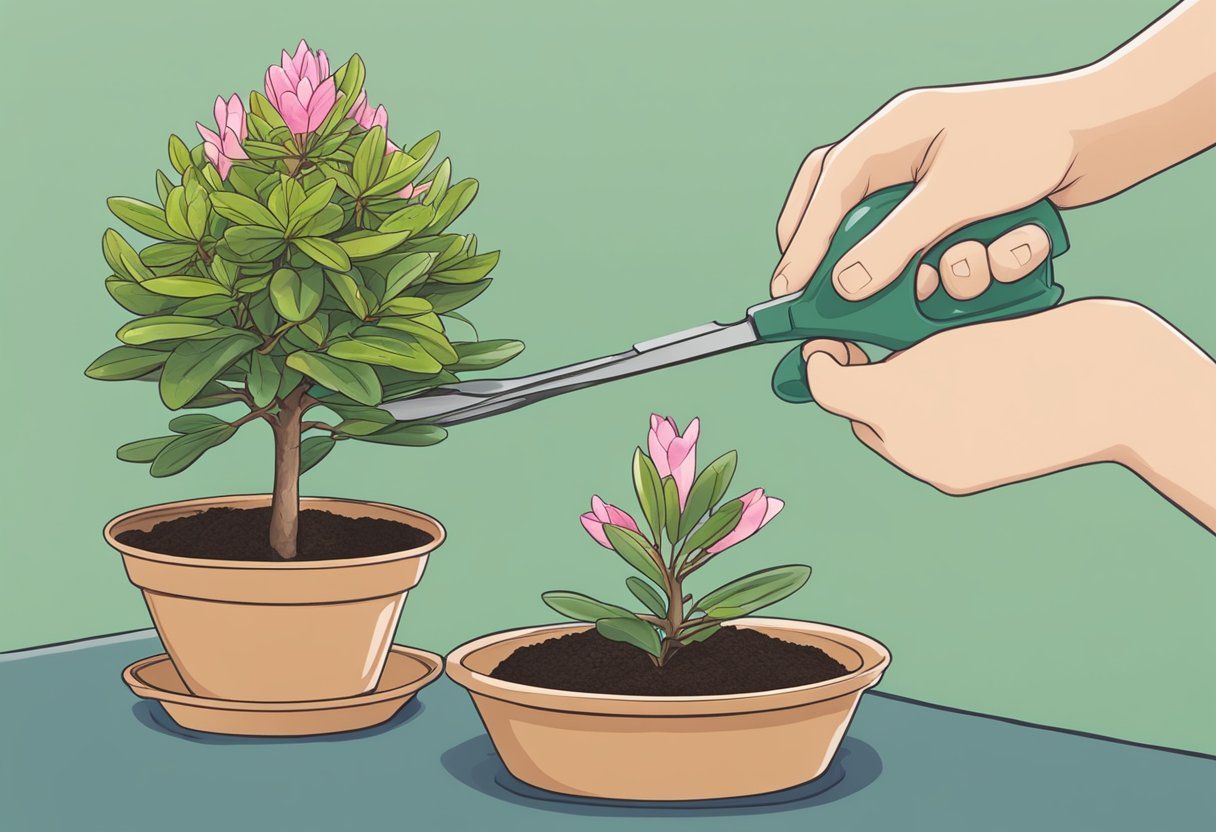
Selecting the Parent Plant
Before propagating a rhododendron, it is important to select a healthy and disease-free parent plant. The parent plant should be at least three years old and have a strong root system. Look for a plant that has healthy leaves, no signs of disease or pests, and is growing vigorously.
Tools and Materials Needed
To propagate a rhododendron, you will need the following tools and materials:
- Pruning shears: Use a sharp pair of pruning shears to take cuttings from the parent plant. Make sure the blades are clean and sterilized to prevent the spread of disease.
- Pots: You will need small pots to plant the cuttings in. Make sure the pots have drainage holes at the bottom.
- Soil: Use a well-draining soil mix that is rich in organic matter.
- Perlite or sand: Mix perlite or sand into the soil to improve drainage.
- Rooting hormone powder: Use rooting hormone powder to encourage the cuttings to form roots.
- Plastic bag: Use a clear plastic bag to create a mini greenhouse for the cuttings.
- Containers: Use containers to hold the plastic bags and keep the cuttings in a warm and humid environment.
By having all the necessary tools and materials ready, you can ensure a successful propagation process.
Propagation Techniques
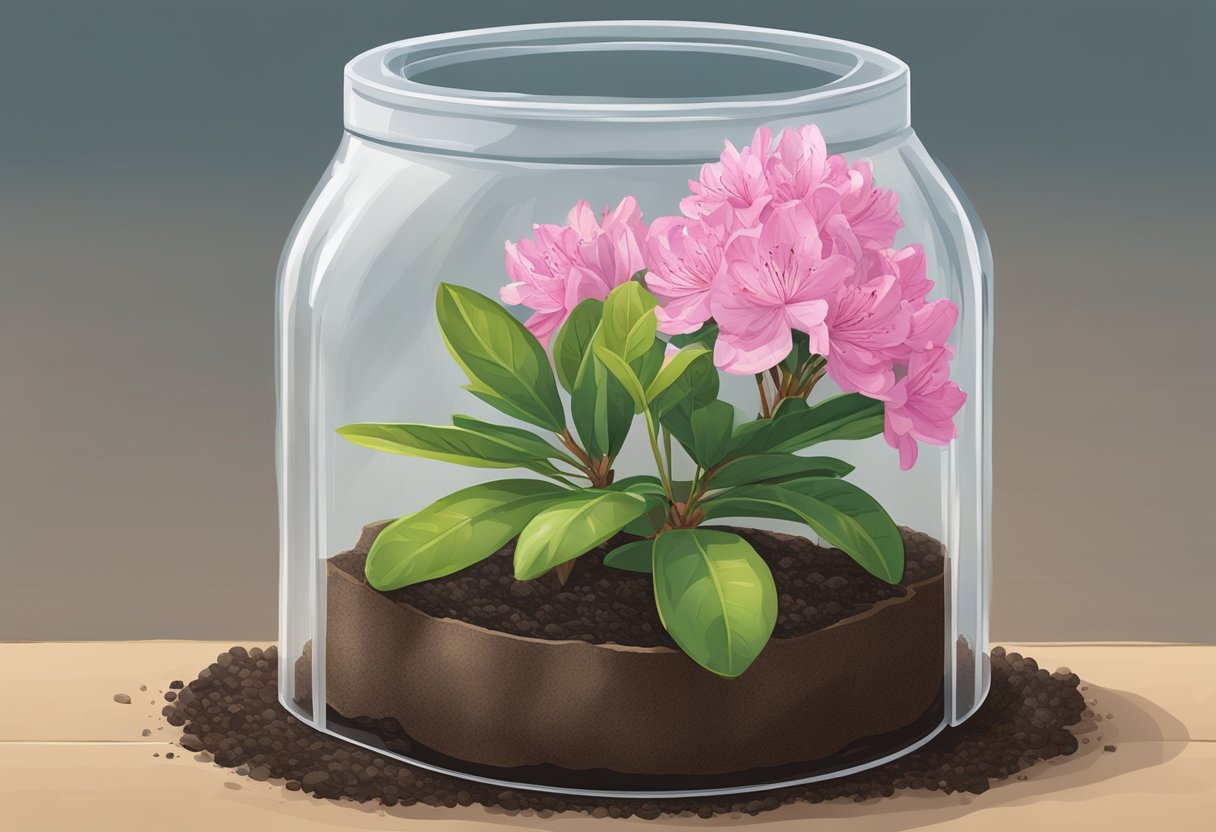
Propagating a rhododendron can be done through several techniques such as stem cuttings, layering method, and growing from seed. Each technique has its advantages and disadvantages, but with the right knowledge and skills, anyone can propagate a rhododendron successfully.
Stem Cuttings
Stem cuttings are the most common way of propagating a rhododendron. It involves taking a cutting from the parent plant and encouraging it to grow roots. The best time to take a cutting is in the early summer when the plant is actively growing.
To take a stem cutting, select a healthy stem that is about six inches long and has at least two sets of leaves. Cut the stem just below a leaf node and remove the lower set of leaves. Dip the cut end into rooting hormone and plant it in a pot filled with a well-draining soil mix. Keep the soil moist and in a warm, bright location. In about six weeks, the cutting should have developed roots and can be transplanted to a larger pot or directly into the garden.
Layering Method
Layering is another propagation technique that involves encouraging a stem to grow roots while it is still attached to the parent plant. This technique is best done in the spring or early summer when the plant is actively growing.
To layer a rhododendron, select a healthy stem that is close to the ground and still flexible. Make a small cut on the underside of the stem and dust it with rooting hormone. Bury the cut section of the stem in a shallow trench and secure it in place with a U-shaped wire. Keep the soil moist and wait for the stem to develop roots. Once the stem has developed roots, it can be cut from the parent plant and transplanted.
Growing from Seed
Growing a rhododendron from seed is the least common propagation technique but can be rewarding. It involves collecting seeds from the parent plant and planting them in a well-draining soil mix.
To collect seeds, wait for the plant to bloom and develop flower buds. Once the flower buds have opened and the petals have fallen, collect the seed pods. Allow the seed pods to dry and split open naturally. Collect the seeds and plant them in a well-draining soil mix. Keep the soil moist and in a bright, warm location. In about two years, the seedlings should be ready to transplant.
In conclusion, propagating a rhododendron can be done through several techniques. Each technique has its advantages and disadvantages, but with the right knowledge and skills, anyone can propagate a rhododendron successfully.
Caring for New Rhododendrons

When propagating rhododendrons, it is important to provide the proper care and maintenance for the new plants. Here are some tips for caring for new rhododendrons:
Potting and Soil Requirements
When potting new rhododendrons, it is important to use a well-draining potting soil that is slightly acidic. A mix of peat moss and perlite or vermiculite is ideal. The pot should have drainage holes to prevent waterlogging.
Watering and Humidity Control
New rhododendrons should be watered regularly, but not excessively. The soil should be kept moist, but not soggy. It is also important to maintain a high level of humidity around the plant, especially during the dry winter months. This can be achieved by placing a tray of water near the plant or using a humidifier.
Light and Temperature Regulation
Rhododendrons prefer partial shade to direct sunlight. They also require a cool, but not freezing, temperature to thrive. During the winter months, it is important to protect the plant from frost by covering it with a cloth or plastic sheet.
Overall, by following these tips for caring for new rhododendrons, you can ensure that your plants grow healthy and strong.
Transplanting and Acclimatization

When to Transplant
Rhododendrons are best transplanted during their dormant season, which is in early spring or late fall. This is when the plant is not actively growing and is less likely to experience stress due to transplanting. It is also important to transplant when the plant is not in bloom to avoid damaging the flowers.
Transplanting Procedure
Before transplanting, it is important to prepare the new planting site. The soil should be well-draining and rich in organic matter. Choose a location with partial shade and protection from strong winds.
To transplant the rhododendron, start by digging a hole that is twice as wide as the root ball and slightly shallower than the depth of the root ball. Gently remove the plant from its current location, being careful not to damage the roots. Place the plant in the new hole and backfill with soil, making sure to firm the soil around the roots.
After transplanting, it is important to acclimate the plant to its new environment. This can be done by providing proper care and maintenance, such as regular watering and fertilization. It is also important to protect the plant from stressors such as extreme temperatures and drought.
Root development is crucial during the acclimatization process. Proper care will help the roots establish themselves in the new soil and ensure the plant’s survival. It may take several months for the plant to fully acclimate and begin to grow, but with proper care, the rhododendron will thrive in its new location.
Troubleshooting Common Issues
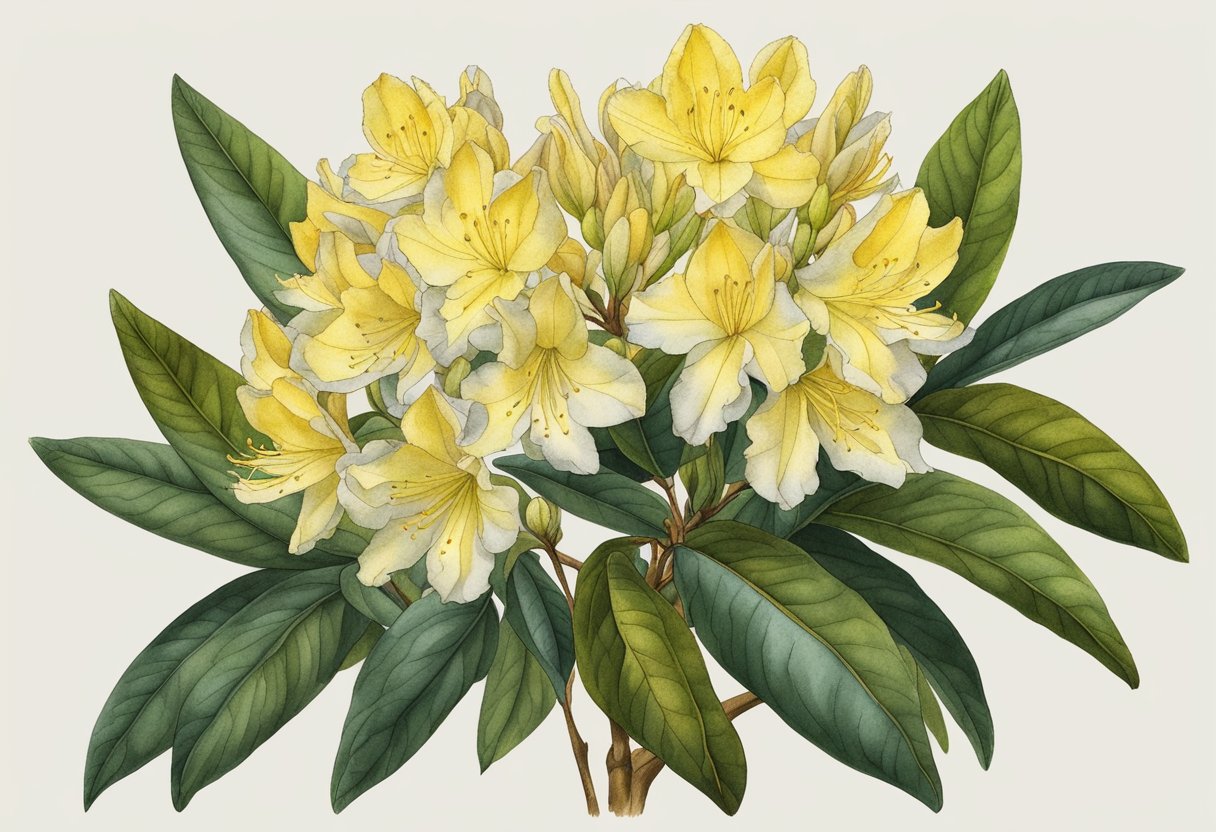
Rhododendrons are generally hardy plants, but like all living things, they can experience problems. Here are some common issues that may arise when propagating rhododendrons and how to troubleshoot them.
Disease and Pest Management
Rhododendrons can be affected by a variety of diseases and pests, including root rot, powdery mildew, and spider mites. To prevent these problems, it is important to keep the plant healthy by providing adequate moisture, good air circulation, and proper fertilization.
If a disease or pest problem does occur, there are several steps that can be taken to manage it. For example, if powdery mildew is present, removing infected leaves and increasing air circulation can help prevent the spread of the disease. Similarly, if spider mites are a problem, spraying the plant with a mixture of water and soap can help control the pests.
Root and Stem Problems
Rhododendrons can also experience problems with their roots and stems. For example, root rot can occur if the plant is overwatered or if the soil does not drain properly. Similarly, stem cankers can develop if the plant is stressed or if it is damaged by pests or weather.
To prevent these problems, it is important to provide the plant with proper moisture and to ensure that the soil drains well. Additionally, avoiding overfertilization and providing adequate air circulation can help prevent stress on the plant.
If a root or stem problem does occur, it is important to take action quickly. For example, if root rot is present, removing affected roots and replanting the rhododendron in fresh soil can help prevent the spread of the disease. Similarly, if stem cankers are present, pruning affected branches and treating the plant with a fungicide can help control the problem.
By keeping an eye out for these common issues and taking appropriate action when necessary, it is possible to successfully propagate a healthy and beautiful rhododendron.
Long-Term Care and Maintenance

Rhododendrons are beautiful and hardy plants that require minimal care and maintenance. However, to ensure their longevity and optimal growth, there are a few things that need to be done.
Pruning and Shaping
Pruning is an essential part of rhododendron care. It helps to maintain the plant’s shape and size, promote new growth, and remove any dead or diseased wood. The best time to prune is after the plant has finished flowering, usually in late spring or early summer.
To prune, use sharp pruning shears, and make clean cuts just above a leaf node. Avoid cutting too close to the stem, as this can damage the plant. It’s best to remove no more than one-third of the plant’s overall growth in any one year.
Shaping is also important, especially for younger plants. To encourage a bushy, well-rounded shape, pinch back the tips of new growth in the spring. This will promote branching and create a fuller plant.
Fertilization and Nutrient Management
Rhododendrons are heavy feeders and require regular fertilization to thrive. A balanced fertilizer with equal parts nitrogen, phosphorus, and potassium is ideal. Fertilize in the spring and fall, following the manufacturer’s instructions.
In addition to fertilizer, rhododendrons also require specific nutrients to grow properly. Iron, magnesium, and sulfur are essential for healthy growth and should be added to the soil as needed. A soil test can help determine any nutrient deficiencies.
It’s important to avoid over-fertilizing, as this can cause root burn and damage the plant. Always follow the recommended dosage and frequency for your specific fertilizer.
By following these simple long-term care and maintenance tips, your rhododendron will thrive and provide you with beautiful blooms for years to come.
Frequently Asked Questions

What is the optimal season to take rhododendron cuttings for propagation?
The best time to take rhododendron cuttings is in the late spring or early summer when the plant is actively growing. This is when the plant is producing new growth, and the stems are still relatively soft and flexible. Avoid taking cuttings during the winter when the plant is dormant, or in the fall when the stems have started to harden.
Can you grow rhododendrons from cuttings placed directly in water?
While it is possible to root rhododendron cuttings in water, it is not recommended. Rhododendrons are sensitive to changes in water quality and temperature, and rooting in water can lead to rot and disease. Instead, it is best to propagate rhododendrons using a well-draining rooting medium.
What is the expected time frame for rhododendron cuttings to develop roots?
Rhododendron cuttings typically take 2-3 months to develop roots. However, this can vary depending on the temperature, humidity, and light levels in the rooting environment. It is important to keep the cuttings moist and avoid letting them dry out during this time.
How should rhododendron cuttings be prepared for successful rooting?
To prepare rhododendron cuttings for rooting, select healthy stems that are 4-6 inches long and have several leaves. Remove the lower leaves from the stem, leaving only two or three at the top. Dip the cut end of the stem in rooting hormone powder and plant it in a well-draining rooting medium, such as perlite or vermiculite.
Is it possible to propagate a rhododendron from a broken branch?
Yes, it is possible to propagate a rhododendron from a broken branch. Select a healthy branch that has broken off cleanly and follow the same steps for preparing a cutting for rooting.
What are the necessary conditions for rhododendron cuttings to root effectively in soil?
Rhododendron cuttings root best in a warm and humid environment with bright, indirect light. The rooting medium should be well-draining and kept consistently moist. Avoid exposing the cuttings to direct sunlight or low humidity, as this can cause them to dry out or wilt.

